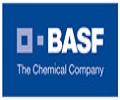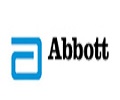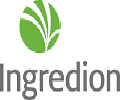-
Email Us
- Top Reports
Global Fat Replacer Market Economic and Social Impact 2025-2032
Price
Single User License 3300
Multi User License 6000
Corporate License 7200
The Fat Replacer market has become a pivotal segment within the food and beverage industry, catering to the growing demand for healthier alternatives while maintaining taste and texture. Fat replacers are substances used to reduce or replace the fat content in food products, offering a solution for consumers seeking to lower their fat intake without sacrificing flavor. This market plays a crucial role in various applications, including dairy products, baked goods, snacks, and sauces, among others. According to the latest report by STATS N DATA, the global Fat Replacer market has witnessed significant growth, driven by rising health consciousness, increasing obesity rates, and a growing trend towards clean label foods.
Historically, the Fat Replacer market has seen steady development, with the current market size estimated at several billion dollars. Analysts project a robust compound annual growth rate (CAGR) over the next few years, buoyed by innovations in food technology and an expanding range of plant-based and natural fat replacers. Key drivers behind this growth include a surge in consumer preference for low-calorie and fat-free products, alongside the increasing incorporation of fat replacers in nutritious and functional foods. However, vendors in this market must navigate certain restraints, such as the complexity of formulating palatable products and consumer skepticism towards artificial additives.
The landscape of the Fat Replacer market is also enriched by numerous opportunities for growth, particularly in the realm of clean label products and sustainable sourcing. As consumers become more aware of the ingredients in their foods, the demand for naturally derived fat replacers is expected to rise. Moreover, technological advancements in food processing techniques promise to enhance the functionality and sensory attributes of fat replacers, aligning with consumer expectations. Innovations such as microencapsulation and the use of fermented ingredients are setting new benchmarks for product development, indicating a dynamic future for the Fat Replacer market. As brands evolve to meet these changing consumer preferences and regulatory pressures, the market is poised for continued expansion, making it an exciting area for both businesses and health-conscious consumers alike.
Understanding the latest trends in the FAT REPLACER MARKET is crucial for businesses aiming to stay ahead in today's fast-paced environment. Our detailed market research report provides companies and investors with valuable insights into the Global Fat Replacer Industry. This report goes beyond basic data analysis, offering advanced forecasts, revenue estimates, and future trends from 2024 to 2031. It is an essential tool for decision-makers navigating the complexities of this evolving market.

Market Overview and Trends
This report offers a comprehensive look at the current state of the Fat Replacer Market. By analyzing historical data, we uncover key industry insights and track the market's growth over time. This in-depth review provides a clear understanding of the Fat Replacer Market's current status, setting a solid foundation for assessing its future direction. By examining past trends, the report helps predict future growth, allowing stakeholders to adapt and take advantage of new opportunities.
Looking forward, the report includes expert predictions and a thorough analysis of future trends in the Fat Replacer Ecosystem. These growth projections outline the market's expected path, helping stakeholders navigate new opportunities. The report highlights significant growth drivers, such as technological advancements and rising demand in various sectors, while also noting potential challenges like regulatory hurdles and economic uncertainties.
Additionally, the report identifies several growth opportunities, offering strategic insights into both challenges and opportunities within the Fat Replacer Market. Understanding these dynamics equips stakeholders to make better decisions and develop strategies to succeed in a rapidly changing environment.
Market Segmentation
The Fat Replacer Market is divided into several categories, including product type, application/end-user, and geography. The segmentation includes:
Type
- Carbohydrate-based
- Protein-based
- Lipid-based
Application
- Bakery & Confectionery
- Dairy & Frozen Desserts
- Convenience Food & beverages
- Sauces
- Dressings
Note: We can customize market segmentation upon request to better meet specific business needs and provide focused insights.
This section dives into the market's segmentation, showing how different components contribute to overall market dynamics. Each segment is assessed based on its size and growth rate, identifying areas of rapid expansion and those with stable growth. This analysis is key to spotting the segments that drive the market and hold strong potential for future development.
The report also includes a Fat Replacer Market attractiveness analysis, evaluating each segment's appeal based on factors like market potential, competitive intensity, and growth prospects. This gives a well-rounded view of which segments are most promising for investment and strategic initiatives, helping businesses allocate resources more effectively and maximize their returns.
Competitive Landscape
Key players featured in this report include:
- Corbion
- Koninklijke DSM
- Ingredion
- Cargill
- Ashland
- Fiberstar
- ADM
- Kerry
- CP Kelco
- DowDuPont
- FMC
The Fat Replacer industry is highly competitive, with major players continuously striving to strengthen their positions and expand their reach. The report provides an in-depth look at the competitive landscape, profiling key players in the Fat Replacer Market and detailing their market shares. This section gives a clear picture of the main participants and their roles in the industry.
Additionally, the report includes a SWOT analysis for these major competitors, assessing their strengths, weaknesses, opportunities, and threats. This analysis offers a complete view of the competitive dynamics and strategic positioning of these companies. Knowing the strengths and weaknesses of competitors helps stakeholders identify areas for improvement and craft strategies to gain a competitive edge.
Recent Developments
The report covers recent key developments in the Global Fat Replacer Market, such as mergers, acquisitions, partnerships, and new product launches. These activities have significantly influenced the competitive landscape and shaped trends within the Fat Replacer industry. Staying updated on these developments helps stakeholders anticipate market shifts and adjust their strategies accordingly.
The report also includes a benchmarking analysis of key products and services. By comparing these offerings, the analysis highlights their performance and market positioning. This comparison is crucial for identifying industry best practices and areas that need improvement, providing valuable insights for stakeholders aiming to enhance their products and remain competitive.
Technological Advancements and Innovations
Technological advancements are a major force driving the Global Fat Replacer Market. Our report highlights the latest innovations and technological progress, showing how these developments are reshaping the Fat Replacer industry landscape.
Industry Dynamics and Structure
The report also examines the overall structure and dynamics of the Fat Replacer industry. This analysis provides a clear understanding of how the industry functions and evolves, highlighting the key components and their interactions. Understanding these elements helps stakeholders spot opportunities for collaboration and innovation, which are essential for driving market growth.
Competitive Analysis Using Porter's Five Forces
Our report uses Porter's Five Forces Analysis to assess the competitive landscape of the Fat Replacer Market. This framework looks at the bargaining power of buyers and suppliers, the threat of new entrants and substitute products, and the level of competition among existing players. This analysis helps identify the factors that influence the industry's profitability and competitiveness, providing stakeholders with essential insights for strategic decision-making.
Value Chain Analysis
The report includes a detailed value chain analysis, mapping the journey from suppliers to end-users. This analysis, backed by thorough market studies, provides insights into each phase of the process, highlighting where value is added and identifying potential areas for efficiency improvements. By optimizing the value chain, stakeholders can enhance their operational efficiency and gain a competitive advantage.
Customer Preferences and Trends
The report also highlights key customer preferences and trends, offering insights into what consumers expect from products and services in the Fat Replacer Market. Understanding these preferences helps businesses anticipate market trends and tailor their offerings accordingly, leading to improved customer satisfaction and business growth.
Regulatory Environment
This report thoroughly explores the regulations and standards affecting the Fat Replacer Market, offering a detailed look at the legal framework governing the industry. This information is crucial for understanding the rules and guidelines that market participants must follow. Staying updated on regulatory changes enables stakeholders to maintain compliance and avoid legal issues.
The report also assesses the impact of recent regulatory changes in the Fat Replacer industry and examines how these shifts shape the market. It provides stakeholders with insights to anticipate potential challenges and adapt their strategies accordingly. Understanding the regulatory landscape helps stakeholders make informed decisions and develop strategies that minimize risks while maximizing opportunities.
Furthermore, the report outlines the compliance requirements for participants in the Fat Replacer Market, detailing the steps needed to adhere to regulations and standards. Meeting these compliance demands is vital for maintaining legal and operational integrity within the market. Emphasizing compliance builds trust with customers and strengthens a company's market position.
Market Entry Strategy
Entering the Fat Replacer industry involves several challenges, including high barriers and strong competition. This report identifies the main obstacles that new entrants face when trying to enter the market, such as significant capital requirements, strict regulations, and intense competition from established players.
The report also details critical success factors for new entrants in the Fat Replacer market, focusing on key elements like innovation, effective marketing, strategic partnerships, and a strong value proposition. By addressing these aspects, new entrants can better navigate the market complexities and improve their chances of success.
Additionally, the report provides strategic recommendations for market entry, including practical advice on positioning, customer acquisition, and differentiation tactics. These strategies help new entrants establish a strong market presence and gain a competitive edge, enabling them to overcome entry barriers and capitalize on opportunities in the Fat Replacer Market.
Economic Indicators and Risk Analysis
The report explores how macroeconomic factors, such as GDP growth, inflation, and employment trends, impact the Fat Replacer Market. This analysis provides stakeholders with a comprehensive understanding of the broader economic environment and its influence on the market, supporting informed decision-making.
The report also examines the key risks and uncertainties in the Fat Replacer Market, highlighting potential challenges that could affect market stability and growth. These risks include economic volatility, regulatory changes, and strong market competition. By understanding these risks, stakeholders can develop strategies to mitigate them and enhance market resilience.
The report also offers specific strategies for mitigating identified risks. The impact assessment and mitigation section provides actionable recommendations to help Fat Replacer Market participants manage risks effectively and maintain stability. By addressing these risks proactively, stakeholders can protect their interests and support sustainable growth.
Investment Analysis
This research evaluates the key suppliers and distributors in the Fat Replacer Market, highlighting their capabilities, reliability, and strategic roles within the supply chain. Understanding these dynamics helps stakeholders optimize their operations and strengthen their market positions.
Additionally, the report identifies prime investment opportunities and provides strategic recommendations. It highlights areas with significant potential for high returns, helping investors make informed decisions about where to allocate resources for maximum impact. Strategic investments in these high-potential areas can boost profitability and drive market growth.
The report includes a comprehensive analysis of return on investment (ROI) and financial projections, which are essential for evaluating the expected profitability of investments and crafting informed financial strategies. Understanding these forecasts helps stakeholders assess potential returns and the risks associated with different investment options. By making data-driven investment decisions, stakeholders can maximize their returns and achieve their financial goals.
Furthermore, the report includes feasibility studies for potential new projects or ventures. These studies assess the viability of new initiatives by analyzing market demand, costs, and potential revenue. Such evaluations help investors make informed decisions about pursuing new opportunities. Engaging in feasible projects allows stakeholders to expand their market presence and foster business growth.
Technological and Innovation Insights
The Fat Replacer Market report explores emerging technologies and their potential impact on the market, highlighting how these advancements are setting the stage for the industry's future. This section focuses on innovations that could disrupt the market, creating new opportunities for growth and innovation.
The report also provides a detailed analysis of the innovation landscape and R&D activities within the Fat Replacer Market. It examines ongoing R&D efforts and the state of innovation, offering a clear view of how companies are driving progress and staying competitive. This analysis is crucial for understanding the role of innovation in market growth and identifying strategic investment areas.
Furthermore, the report explores the potential of disruptive technologies in the Fat Replacer Market. These technologies could reshape the industry, creating new opportunities and challenges. By staying informed about these emerging technologies, stakeholders can adjust their strategies and leverage innovation to maintain a competitive advantage.
Geographic Analysis
The report includes a detailed geographic analysis of the Fat Replacer Market, offering insights into regional trends and opportunities. This section covers key regions, including North America, Europe, Asia-Pacific, Latin America, and the Middle East & Africa. Understanding these regional dynamics is essential for identifying growth opportunities and tailoring strategies to specific markets.
Regional Insights
The analysis also highlights regional trends and developments, focusing on the main market drivers and challenges in each area. Understanding these regional dynamics helps stakeholders make informed decisions about market entry, expansion, and resource allocation.
Market Size and Growth Rate by Region
The report examines the market size and growth rate across different regions, providing a clear view of which areas are growing the fastest. This information is vital for identifying key markets and planning strategic initiatives.
Emerging Markets and Opportunities
The report identifies emerging markets with high growth potential, offering strategic recommendations for tapping into these opportunities. Understanding these emerging markets is crucial for stakeholders looking to expand their presence and access new growth areas.
Key Questions Addressed in This Report
This comprehensive report answers several key questions, ensuring that stakeholders gain a deep understanding of the Fat Replacer Market:
What is the size of the Global Fat Replacer Market, and what growth rate is expected during the forecast period?
What are the main factors driving the growth of the Fat Replacer Market?
What challenges and risks does the Fat Replacer Market currently face?
Who are the major players in the Fat Replacer Market?
What trends are influencing the shares of the Fat Replacer Market?
What insights can be drawn from applying Porter's Five Forces model to the Fat Replacer Market?
What global expansion opportunities exist in the Fat Replacer Market?
Why Invest in this Fat Replacer Market Report
Stay Informed:
This exclusive research study keeps you updated with the latest information on the competitive landscape, helping you understand the strategies and positions of key players in the market.
Access Analytical Data and Strategic Planning Methods:
The report offers comprehensive analytical data and strategic planning tools that enable you to make informed decisions and develop strong market strategies.
Deepen Understanding of Critical Product Segments:
This report provides in-depth insights into key product segments, helping you understand their performance, trends, and market potential.
Explore Market Dynamics Comprehensively:
This report thoroughly examines the factors influencing market dynamics, providing an analysis of the drivers, challenges, opportunities, and constraints within the market.
Access Regional Analyses and Business Profiles of Key Stakeholders:
With detailed regional analyses and profiles of key stakeholders, this report provides insights into regional market conditions and the roles of major market participants.
Gain Exclusive Insights into Factors Impacting Market Growth:
Obtain exclusive insights into the factors driving market growth, helping you anticipate changes and adjust your strategies effectively.
Our market research report is an essential resource for investors and businesses seeking a deep understanding of the Global Fat Replacer Market. With comprehensive data, detailed analyses, and actionable insights, this report equips stakeholders with the knowledge they need to make informed decisions, develop successful strategies, and capitalize on the vast opportunities within the Fat Replacer industry. We recommend leveraging these insights to enhance strategic planning and secure a competitive edge in the Fat Replacer Market.
Frequently Asked Questions
1 What global expansion opportunities are available in the Fat Replacer Market?
The Fat Replacer report identifies several regions, including North America, Europe, Asia-Pacific, and emerging markets, that present significant growth opportunities. It provides strategic recommendations for companies looking to expand their market presence globally.
2 Who are the major players in the Fat Replacer Market?
The report profiles the leading players in the Fat Replacer Market like Corbion, Koninklijke DSM, Ingredion, Cargill, Ashland, Fiberstar, ADM, Kerry, CP Kelco, DowDuPont, FMC providing a comprehensive SWOT analysis for each. It examines their market shares, strengths, weaknesses, and strategies, helping stakeholders understand the competitive landscape.
3 What years does this Fat Replacer Market Report cover?
The report covers the Fat Replacer Market historical market size for years: 2019, 2020, 2021, 2022 and 2023. The report also forecasts the Fat Replacer Industry size for years: 2024, 2025, 2026, 2027, 2028, 2029, 2030, and 2031
4 What challenges and risks do the Fat Replacer Market currently face?
The Fat Replacer Market faces several challenges, such as economic uncertainties, regulatory shifts, and intense competition. The report provides a risk analysis that identifies potential obstacles and offers strategies for managing them.
5 What insights can be drawn from applying Porter’s Five Forces model to the Fat Replacer Market?
The Porter’s Five Forces analysis provides valuable insights into the competitive dynamics of the Fat Replacer Market. It evaluates the bargaining power of buyers and suppliers, the threat of new entrants, the impact of substitutes, and the intensity of competitive rivalry.
6 What are the current trends influencing the Fat Replacer Market?
Current trends include technological innovations, strategic mergers and partnerships, and shifting consumer preferences. The report discusses how these trends are shaping the market and driving growth opportunities.
7 What competitive strategies are key players in the Fat Replacer Market using?
The report analyzes the competitive strategies of major players in the Fat Replacer Market, including mergers, acquisitions, and partnerships. It also looks at product innovations, helping stakeholders anticipate shifts in the market and stay competitive.










